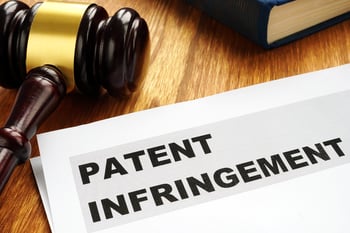Raised Bar for Defending Against Design Patent Infringement
The New Ruling Narrows Design Patent Infringement Defenses
In a recent development in design patent law, the United States Court of Appeals for the Federal Circuit narrowed what is considered "comparison prior art" in design patent infringement cases. This ruling has significant implications for patent owners, litigants, courts, and the US Patent and Trademark Office (USPTO).
How Does Design Patent Infringement Occur?
Design patent infringement occurs when a person produces, sells, or imports into the United States a product that infringes upon a patented design without the patent owner's permission. The key issue in determining infringement is whether an "ordinary observer" would find the alleged infringing design substantially similar to the patented design when comparing the two side by side.
Interestingly, it's not necessary for the entire design to be copied for infringement to occur. If a significant portion of the design is copied and would lead an ordinary observer to purchase the infringing design thinking it was the patented design, then infringement has occurred.
Defendants in Infringement Cases Try to Invalidate the Patent
When faced with a design patent infringement suit, defendants usually seek to invalidate the patent to avoid liability. Such efforts typically include challenging the patent’s novelty or non-obviousness by citing prior art to the court showing elements of the patented design.
Under existing law, defendants could assemble prior art from any publicly available designs, increasing the likelihood of assembling enough features to invalidate the patent.
The Federal Circuit's Decision
The Federal Circuit's opinion redefines the scope of comparison prior art, limiting it to the same article of manufacture claimed by the patented design. This means that in design patent infringement cases, only designs applied to the same type of product as that protected by the patent can serve as valid comparison prior art. In other words, going forward it will be more difficult for defendants to invalidate the patent.
Implications of the Decision
This ruling has far-reaching implications for various stakeholders in the legal and patent landscapes. For design patent owners and applicants, this ruling potentially increases the value of design patent holdings, since enforcement of patent rights has been strengthened and recoveries in infringement cases made more likely.
For litigants, this decision may alter the strategy for design patent infringement cases. The narrowed scope of comparison of prior art may limit the range of references that can be used in defense against infringement allegations, strengthening the hand of patent holders.
For courts and the USPTO, this decision provides a more focused guideline for assessing design patent infringement cases. It may streamline the adjudication process by reducing the breadth of potentially admissible prior art references.
Practical Considerations
In light of this decision, patent owners and applicants should revisit their patent strategies. Design patents already represented a substantial bargain for applicants to protect their innovations: they are inexpensive in comparison to utility patents, require less time to be granted, and can result in infringement recoveries comparable to utility patents. Stronger design patent rights make this tool an essential consideration for individuals and companies constructing an IP portfolio.
Moreover, because this decision raises questions about the admissibility of prior art references in infringement defense, patent litigants should also consider how this new scope may limit their ability to defend against, or improve their ability to show design patent infringement in court.
The Federal Circuit's decision to narrow the scope of comparison prior art in design patent infringement cases represents a significant shift in design patent law. As the landscape of design patent law continues to evolve, stakeholders must stay informed and adapt their strategies accordingly.
Quality Representation for Protecting Your IP
In the complex and dynamic landscape of intellectual property (IP) law, having a trusted, experienced, and knowledgeable legal partner is crucial. IP law is constantly evolving, with new case law, regulations, and technological advancements shaping its landscape.
At Martensen IP, we stay at the forefront of these changes. We continually educate ourselves on emerging trends and shifts in the law, ensuring that we can provide the most current and effective advice to our clients.
We represent clients in a variety of IP enforcement and litigation matters as well as cases involving:
- IP due diligence reviews
- IP licensing contracts
- IP strategy
- Patent rights
- Trade secret protection
Schedule an initial consultation with our attorneys.





